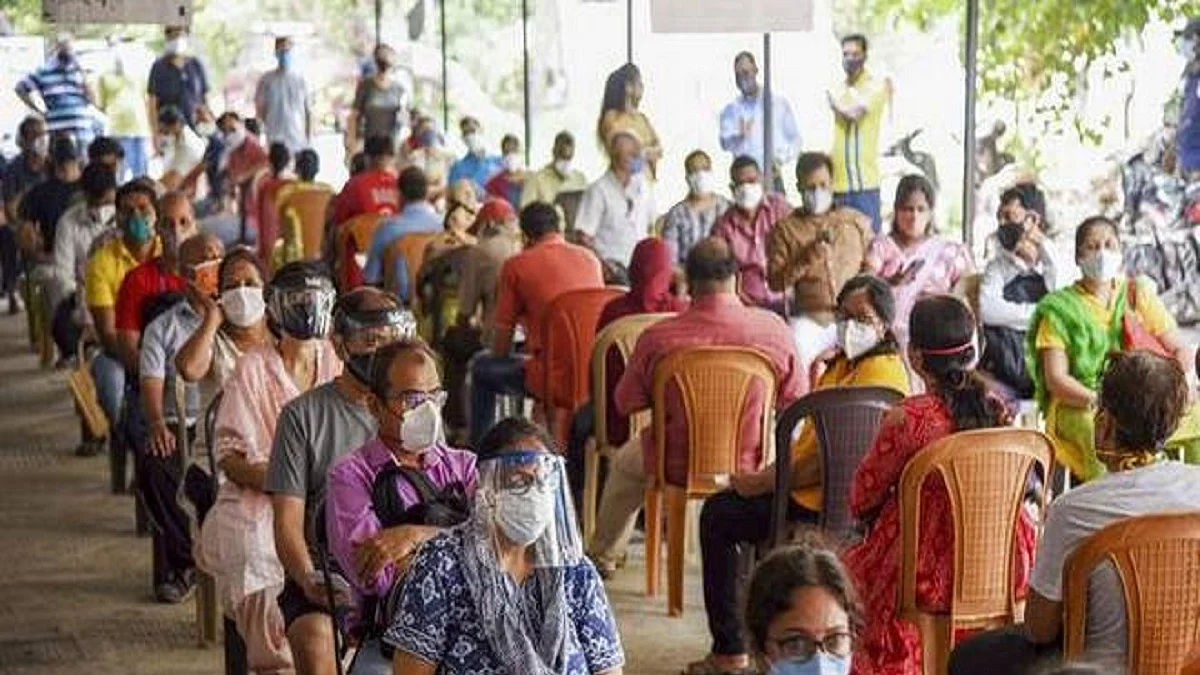Govt patting itself for vaccination tally on day one of revised policy, but this pace can’t be maintained
The figure was achieved chiefly because of increased vaccine supply to states. New policy’s flaws such as setting aside 25 per cent of doses for the moneyed will also hinder the pace of vaccination

The new phase of vaccination kicked in on June 21, 2021 in India under the revised vaccine policy, setting a record of sorts in that 82.7 lakh people were inoculated in one day, but this pace cannot be maintained. It could even be reduced to below half mark of that. Even sources at the helm of affairs at the Centre expect the tally to reach an average of 45 lakh shots per day.
The vaccine policy in the country, which has all along been carrying PM Narendra Modi’s stamp on it, had inherent policy defects from the beginning and has undergone several modifications. Under the latest policy, the Centre will procure 75 per cent of the vaccine stock from the open market and distribute it to the states for administering free of cost to everyone of age 18 years and above at government vaccination centres.
The new vaccine policy was modified because of the faulty rationale of the Centre which was severely criticized not only by opposition political parties, well informed experts and common people but also by the Supreme Court of India. The Centre had decentralized the vaccine policy from May 1 allegedly in a bid to absolve the Centre’s responsibility and transfer it to the fund starved states. The earlier centralized policy was in operation right from the launch of the vaccination drive on January 16, 2021. The recentralized version of the vaccine policy has come into effect from June 21.
Under the recentralized vaccine policy, India returned to centralized procurement and distribution of COVID-19 vaccines. The Centre will procure 75 per cent of the vaccine stock, leaving 25 per cent for private hospitals and non-government vaccination centres, which can levy a service charge of Rs 150 over and above the price of the vaccines.
It may be mentioned that the rates of vaccines for private and non-government vaccination facilities are still fixed in the range of Rs 600 to Rs 1100 per dose, who in turn charge the people anything they want to.
It has been reported that some hospitals and centres are charging even above Rs 1800 per dose.
One of the allegations against the Modi government was that it supported profiteers and corporates, which opened the door for vaccine manufacturers to sell 50 per cent of their production to the states and private institutions at pre-decided prices. The Centre was procuring the vaccines at Rs 150 per dose and the rate for the states were Rs 300 and above. The new policy has done away with profiteering from the states but not from others, which is still not a good policy.
No one should be allowed to charge exorbitant rates from even a person with money. Setting aside 25 per cent of the doses for moneyed people is wrong because it is an inequitable distribution between haves and have-nots. This may further slow the pace of vaccination.
It should be always kept in mind at all levels of planning and implementation that the vaccine remains our strongest weapon to fight COVID-19. However, PM Modi is making a blunder by setting aside 25 per cent doses for those who have enough money to spare, as if we have 25 per cent of moneyed people in the country left after the economic devastation on account of the pandemic and improper policy response. As per latest poverty estimates, the number of poor in India has trebled in just one and half year of the pandemic.
The first day’s vaccination numbers under the new policy framework does indicate hard work by front-line corona warriors and professionals engaged in vaccination. However, their enthusiasm needs to be maintained and encouraged by appropriate policies and implementation process.
The said record was achieved chiefly because of increased vaccine supply to the states after the new guidelines went into force as well as an increase in the number of free vaccines sites. The Centre had supplied 2.95 crore doses to the states where at present around 80,000 government vaccinations centres are operational. Officials have admitted that the spike in vaccination numbers should be seen within the “framework of availability” of vaccines.
It indicates that production, procurement and supply of vaccines to the beneficiaries remains a challenging task, though the production capacity of domestic vaccine manufacturers has seen considerable increase along with permission to import other vaccine candidates.
Supply of vaccines and inoculation therefore needs better handling at a time when ‘artificial categorisation’ related impediments have been done away with. It is good that prior appointment through website is not now necessarily required and one can go and take vaccines on-site, but it can increase the load on vaccination staff due to overcrowding which needs to be carefully handled.
The Centre must assure availability of vaccination doses to all states on equitable basis, and there should not be any politics in this regards. A cursory look at the first day record suggests that over half of the doses were administered in either BJP or NDA ruled states – Madhya Pradesh, Karnataka, Uttar Pradesh, Gujarat, and Bihar. The other states still seem to be finding themselves in difficulty in implementing the drive on account of several reasons including lack of funds and capacity constraints, and hence need more help from the Centre.
(IPA Service)
Views are personal
Follow us on: Facebook, Twitter, Google News, Instagram
Join our official telegram channel (@nationalherald) and stay updated with the latest headlines
